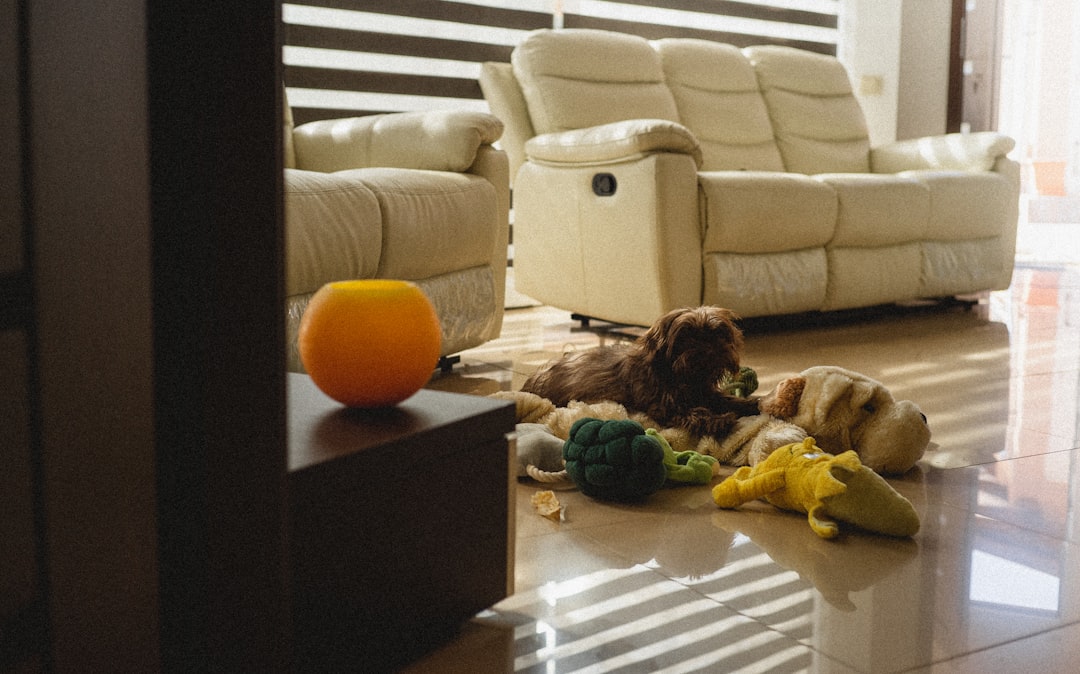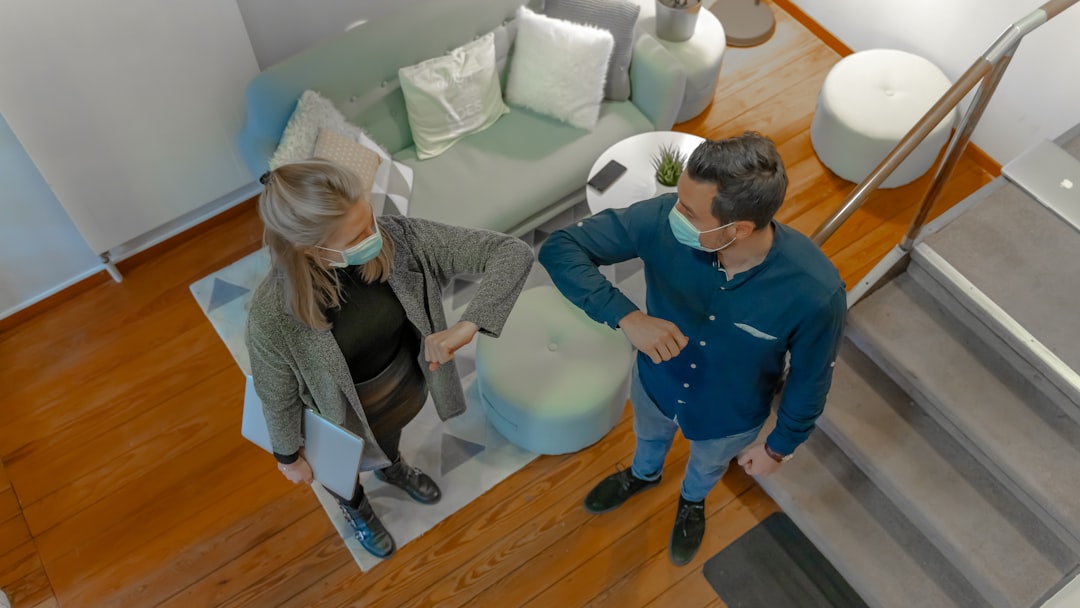

Engage prospects with a scan and streamline customer engagement with FREE QR code marketing tools by Sona – no strings attached!
Create a Free QR CodeFree consultation

No commitment

Engage prospects with a scan and streamline customer engagement with FREE QR code marketing tools by Sona – no strings attached!
Create a Free QR CodeFree consultation

No commitment
QR codes have evolved from a novelty to a strategic powerhouse in bridging offline engagement with online action. For furniture cleaning equipment providers, QR codes represent a frictionless and highly effective way to connect field operations, technicians, and potential buyers with rich digital resources, without the need for an app download or complex setup. By making instructions, support, and product data instantly accessible, providers increase transparency, accelerate education, and simplify warranty and maintenance workflows, which are essential in a category where safety, compliance, and performance are scrutinized.
For businesses specializing in commercial cleaning equipment and furniture cleaning services, making customer journeys seamless and measurable is a top priority. Outdated processes like handing out printed brochures, relying on static instructions, or managing paper-based maintenance records often result in missed opportunities to track high-value prospects and a lack of visibility into potential leads. When on-site interest is high but does not lead to an immediate form submission, valuable contacts can slip through the cracks. Smart QR deployments capture intent at the source and translate it into actionable engagement that fuels follow-ups, retargeting, and account prioritization.
This guide explores how QR codes can be used by furniture cleaning equipment providers to create dynamic, measurable customer experiences, enable retargeting, and drive operational excellence. You will learn practical strategies for overcoming challenges in maintenance, compliance, data completeness, and equipment selection while turning every brochure, label, and service interaction into a digital gateway. Along the way, you will also see how platforms like Sona QR and Sona.com unify offline activity with CRM workflows and revenue attribution, so every scan becomes part of a performance-driven marketing and service engine.

Furniture cleaning equipment providers often struggle to connect hands-on product experiences with digital support, documentation, and sales capture. Technicians in the field and buyers at demonstrations need immediate answers, yet paper manuals, static PDFs, and ad hoc phone calls slow everything down. QR codes bridge the gap between physical product surfaces and digital outcomes by letting anyone scan, act, and leave a measurable signal that can be routed to your CRM in seconds.
Begin by converting your most common analog materials into dynamic QR touchpoints. Print codes on equipment tags, packaging, service vehicle signage, and trade show banners, then route each to a dedicated landing page. Replace manual form fills with scannable digital forms. Equip your sales kits with QR-enabled comparison tools and spec sheets. When a prospect scans, you capture intent and context while removing friction for the user.
Modern platforms like Sona QR automate scan recording, intent tagging, and CRM syncing. That means your field teams keep moving, clients get answers faster, and marketing gains a reliable data stream to nurture, retarget, and convert.

Furniture cleaning equipment buyers and users expect fast answers, transparent maintenance histories, and clear proof of compliance. Paper trails can be lost, websites can be hard to navigate, and not everyone wants to install another app. QR codes deliver instant access to the information that matters, on the exact surface where the need arises, like the handle of an extractor or the door of a service van.
At the same time, leadership teams need measurable signals from offline channels. Without tracking, print brochures and in-person demos become blind spots. Dynamic QR codes add instrumentation to the physical world, providing scan counts, timestamps, device types, and broad location data, then tie those signals to accounts and opportunities in your CRM.
Examples tailored to this vertical include appointment cards that link to on-site demos, equipment labels that route to updated maintenance logs, and trade show backdrops that open lead capture forms. The goal is consistent: turn every offline touchpoint into an actionable digital moment that you can measure.
Furniture cleaning equipment providers rely on a mix of outreach, field service, and post-sale support. The right QR format aligns with the job at hand, from product research to warranty support to reorders. You can generate all of these formats in Sona QR and manage them centrally.
Dynamic codes are best for most business-critical use cases because they allow destination updates and full analytics. Reserve static codes for unchanging resources like a permanent safety notice PDF, and use dynamic codes when performance tracking, segmentation, or future flexibility is important.

Growth emerges wherever your buyers and users interact with your brand in the physical world. Map those moments, then add QR codes to remove friction and capture intent. For furniture cleaning equipment providers, the most effective placements are often close to the equipment, near decision points, or embedded in service documentation.
Start by auditing your sales and service materials. Identify any print asset that prompts additional questions, any process that requires a phone call or email, and any scenario where details get lost later. If the action could be completed instantly with a scan, that is a prime QR opportunity. Equip your field teams with preprinted, branded codes to apply as they go, then link each placement to a dedicated landing page that matches the context.
By placing codes where the questions arise, you help users get answers in the moment and transform offline touchpoints into digital signals that support sales, service, and retention planning.

The best QR deployments solve the issues that routinely cause delays and lost visibility. In this vertical, that often means making complex instructions easy to access, ensuring every warranty is registered, and documenting maintenance for compliance and resale value. Start with the highest-impact interactions and scale from there.
Think of QR use cases as small bridges that convert intent into action. On the buyer side, codes reduce research friction and connect prospects to decision resources. On the service side, they capture data you would otherwise miss and keep your CRM complete.
These use cases immediately improve customer experience and give your internal teams the data they need to manage accounts proactively. Over time, the aggregate data helps you optimize product content, forecast inventory, and target the accounts most likely to upgrade.
Each scan is a micro-signal of interest that reveals who wants what, where, and when. When you deploy QR codes across your sales and service landscape, you create a stream of behavioral data that is far more actionable than generic web traffic. Segment that data to fuel personalized follow-ups, smart nurture sequences, and timely offers.
Start by tagging each QR code by context and objective. A scan on a trade show demo sign is a different intent than a scan on a maintenance tag in a janitorial closet. Sync these tagged events into your CRM and ad platforms so that your sales team and marketing automation can respond with precision.
With Sona QR, each code can be configured with tags and destinations that match your segmentation plan. Sona’s retargeting playbook enriches and unifies that data across the rest of your marketing stack, letting you retarget based on real behavior, not assumptions.
QR codes are the connective tissue between your offline footprint and your digital marketing programs. They allow you to treat every print piece and surface as an entry point to your funnel, complete with attribution and remarketing hooks. For furniture cleaning equipment providers, this unlocks better spend efficiency and a more cohesive buyer experience.
To integrate effectively, align each QR placement with the content format and call to action that fits the channel. Then ensure that the landing experience continues the story promised by the physical material. Finally, organize your codes within a centralized platform so performance insights roll up in a way that is easy to analyze and optimize.
With Sona QR, you manage codes across channels in one dashboard, monitor performance by placement, and sync scan data with your CRM and ad platforms. This closes attribution gaps and lets your team double down on what works.
A disciplined approach ensures your QR program drives measurable outcomes, not just curiosity scans. Use this checklist to plan, launch, and iterate with confidence.
Clarify the business problem and the action you want the scanner to take. For example, a code on the inside of a janitorial cart that says Scan to request urgent equipment repair turns missed phone calls into immediate digital tickets. A code on a showroom display that says Scan to compare upholstery extractors guides prospects toward a decision while capturing contact details.
Choose static codes only for fixed resources that will never change. In most cases, dynamic codes are the better option because they are editable and trackable, which supports optimization and retargeting.
Design your QR codes to be recognizable and scannable in real conditions. Use brand colors, a clear frame, and a benefit-driven call to action. Then test thoroughly.
Roll out codes across high-impact surfaces and materials in waves so you can measure and learn. Prioritize placements where engagement is frequent or decisions are made.
Use analytics to monitor performance and adjust campaigns in real time. Watch for spikes in scans by product or region, and be ready to respond with targeted communications.
Connecting offline engagement to pipeline and revenue is vital for decision-making. Without attribution, it is difficult to justify print budgets or in-person initiatives. QR analytics provide the missing layer of visibility by turning each scan into traceable digital behavior that can be connected to outcomes like demos, quotes, and renewals.
Start by capturing granular data for each scan, such as timestamp, device type, and broad location. Then stitch those signals to your CRM records, opportunities, and marketing channels. This creates a continuous thread from first scan to closed-won deal or renewed contract.
Sona QR captures real-world engagement and makes it accessible in a clean dashboard. Sona’s offline attribution extends that value by unifying fragmented touchpoints across the buying journey, so you can see how QR activity contributes to pipeline and helps accelerate deals.
The most successful QR programs are consistent, well-instrumented, and easy for customers and staff to use. Focus on clarity, measurement, and automation, then layer in creative placements that match your typical buyer environment.
Creative deployment examples include a QR sticker inside equipment cases that opens a quick-start checklist, and a QR on invoices that lets clients schedule their next maintenance visit with a single scan. Both drive repeat engagement and reduce administrative back-and-forth.

Furniture cleaning equipment providers have already proven that small QR-enabled improvements compound into significant business results. The key is to attach QR codes to moments that matter, then use analytics to refine over time.
To inspire your own ideas, consider building a user-generated content loop. Add a QR code to packaging that invites customers to share before-and-after furniture cleaning photos and reviews. Reward submissions with a consumables discount and feature top entries in your social channels. Each scan fuels retargeting audiences and nurtures advocacy.
For furniture cleaning equipment providers, QR codes are more than shortcuts, they are a strategy that connects equipment in the field to digital business outcomes. When thoughtfully deployed, they convert every surface and printed asset into a gateway for lead capture, automated support, and measurable engagement. In a market where buyers research anonymously and operations rely on timely maintenance, QR codes keep records current, reduce friction, and drive accountability across teams.
The result is a connected customer experience that moves people from curiosity to conversion, backed by analytics that show what works. With Sona QR, you can create dynamic, branded codes, track performance by placement, and sync intent signals to your CRM. With Sona.com, you can connect scans to pipeline and revenue using unified buyer journeys and multi-touch attribution. Start creating QR codes for free.
QR codes have transformed the furniture cleaning equipment providers industry by turning traditional product information and support into interactive, measurable engagement opportunities. Whether it’s simplifying customer access to user manuals, enabling instant service requests, or providing exclusive promotions, QR codes replace cumbersome processes with seamless, mobile-friendly interactions that enhance customer satisfaction and loyalty.
Imagine empowering your clients to scan a code and instantly receive tailored maintenance tips or schedule a service visit—streamlining communication while capturing valuable data on usage patterns. With Sona QR, you can create dynamic, trackable QR codes in seconds, update campaigns on the fly without reprinting, and link every scan directly to customer insights and revenue growth. No missed connections, just smarter engagement that drives business forward.
Start for free with Sona QR today and transform every scan into a powerful tool for customer acquisition, retention, and measurable success.
Professional furniture cleaning typically involves equipment such as upholstery extractors, steamers, and specialized cleaning tools designed for commercial use.
QR codes can be printed on equipment tags, packaging, service vehicle signage, trade show banners, and manuals to provide instant access to instructions, support, warranty registration, maintenance logs, and service requests without requiring app downloads.
QR codes enable automated maintenance reminders and logs by linking to service records and scheduling tools, which help prevent missed service cycles, improve contract renewals, and provide proof of proper care for compliance and resale value.
Companies track service quality by capturing scan data such as timestamps, locations, and device types, then integrating this data with CRM systems to monitor engagement, identify high-intent signals, and attribute scans to downstream revenue and customer interactions.
Best practices include accessing dynamic, up-to-date care guidelines and training videos via QR codes on equipment and manuals, following safety and compliance protocols, and using scheduled maintenance reminders to ensure consistent and effective cleaning.
Use Sona QR's trackable codes to improve customer acquisition and engagement today.
Create Your FREE Trackable QR Code in SecondsJoin results-focused teams combining Sona Platform automation with advanced Google Ads strategies to scale lead generation

Connect your existing CRM

Free Account Enrichment

No setup fees
No commitment required

Free consultation

Get a custom Google Ads roadmap for your business






Launch campaigns that generate qualified leads in 30 days or less.
